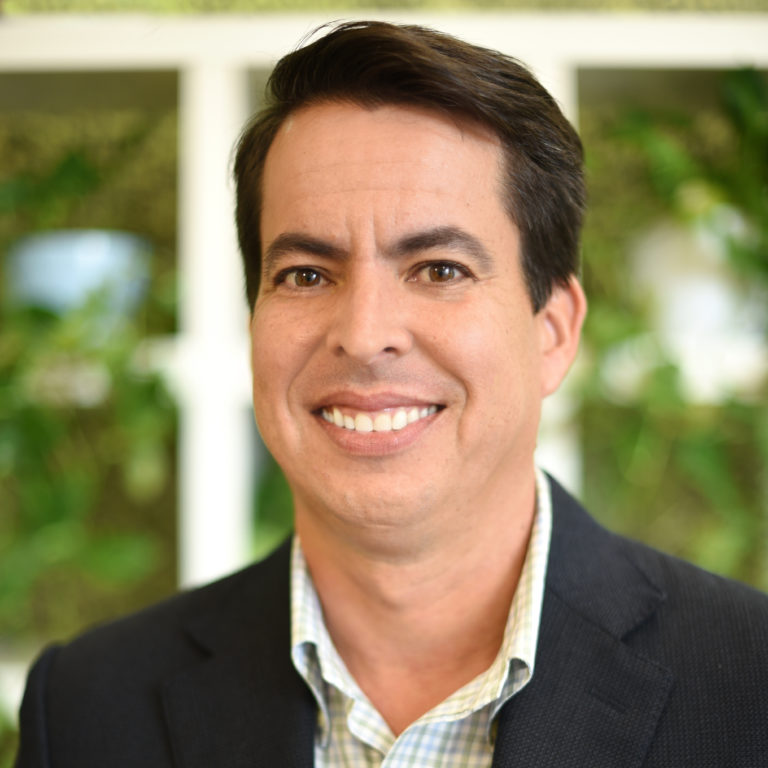In October 2020, “Missing in the Margins: Estimating the Scale of the COVID-19 Attendance Crisis” estimated that approximately 3 million American students had experienced minimal to no formal education since March 2020 due to the COVID-19 pandemic. The analysis focused on the most educationally marginalized students in the country — English learners and students with disabilities, in foster care, experiencing homelessness, and/or eligible for the Migrant Education Program. But the original 50 state and D.C. estimates left out Puerto Rico, the Bureau of Indian Education, and other U.S. territories. These students have been just as affected by the pandemic, if not moreso, and deserve more attention.
Missing in the Margins data estimates now include data from Puerto Rico and the Bureau of Indian Education. Other U.S. territories did not have sufficient comparable data on the population groups in our original estimates, but we are hopeful that this expanded version paints a more comprehensive picture.
The estimates emphasize the scale of the challenge before state and local education agencies as they work to begin the recovery process. As before, estimates are based on student population numbers from educationally marginalized groups, not on 2021-22 enrollment numbers. Those enrollment numbers, where available, track with our earlier estimates: enrollments are down around 2-3% on average, with much larger reductions concentrated in kindergarten. But even this far into the 2020-21 school year, we still do not have a clear enough picture of who these unenrolled students are or where they have gone: private school, home school, work, or elsewhere.
In 2017, public school enrollment in Puerto Rico was approximately 350,000 students, but economic crises, natural disasters, and the COVID-9 pandemic have all contributed to fast enrollment declines. Local estimates suggest enrollment is now closer to 280,000. We estimate up to 25,000 children on the island may have had little or no access to education due to the pandemic.
To learn more, we sat down virtually with Carlos Rodríguez Silvestre, Executive Director of the Flamboyan Foundation in Puerto Rico, where he oversees all aspects of the Foundation’s mission-driven work and programmatic strategy in Puerto Rico, to ensure students most impacted by inequity are prepared to succeed in school and beyond. This Q&A has been edited for length and clarity.
 How are students in Puerto Rico faring during the COVID-19 school closures and virtual learning? How have the effects of COVID-19 interacted with other disaster response efforts, including the ongoing recovery from Hurricane Maria?
How are students in Puerto Rico faring during the COVID-19 school closures and virtual learning? How have the effects of COVID-19 interacted with other disaster response efforts, including the ongoing recovery from Hurricane Maria?
COVID-19 compounded trauma for students in Puerto Rico. The end of in-person classes last March 16 due to the COVID-19 pandemic is the latest in a series of interruptions to the education system in Puerto Rico, including Hurricanes Irma and Maria in 2017 and earthquakes in early 2020. We estimate that students in Puerto Rico already lost up to 159 days of school between 2017 and 2020. Adding on lost instructional and socialization time related to the pandemic further deepens challenges for students, families, and educators.
Taken together, these disasters have had a profound effect on the physical, social, emotional and academic wellbeing of students. Any resolutions will need to take into account the compounded nature of trauma on students and the uniqueness of Puerto Rico’s context.
- Are there experiences or considerations that may be unique to Puerto Rican students and schools?
Yes. The compounded impacts of multiple disasters present unique challenges for Puerto Rican students and schools.
A crippling economic crisis had left the island bankrupt in 2006 and 15 years later recovery has not been realized. Schools and island infrastructure were already under-resourced as a result.
The widespread lack of Wi-Fi infrastructure and access to electronic devices have widened the inequities our students were already facing. In the early days of the pandemic, many teachers and students connected via WhatsApp because they didn’t have access to any other consistent and reliable digital platform. Further, an already vulnerable electrical grid was damaged severely by the 2017 hurricanes and 2020 earthquakes. Electric and internet infrastructure are unstable in well-developed urban centers of the island and are even worse in rural areas.
In addition to a debilitated infrastructure and the impact of natural disasters, Puerto Rico’s education system also faced the closure of over 400 schools in two years, including the year after the hurricanes hit.
This school year, academic instruction has been completely virtual and far too many students are not able to access online classes. Even students who were able to connect virtually faced other challenges such as housing instability, food insecurity, and isolation which hampered their ability to learn. An unknown number of students have had practically no instruction at all during this period of time. Significant and widespread learning loss is projected which will worsen existing learning and achievement disparities and make the return to school buildings even more challenging.
The outlook for our students – in particular those who live under the poverty line – is dire.
- Are there particular resources that Puerto Rican students will need in order to educationally recover from COVID-19?
Research shows that Puerto Rican youth experienced significant disaster exposure and reported trauma-related symptoms that warrant mental health services related to the aftermath of hurricanes Irma and María. As a result, social and emotional supports were a pressing need for our students even before the pandemic. The magnitude of the impact of this prolonged crisis will likely take years to fully understand but it is clear Puerto Rican students are experiencing an emotional toll. We have heard directly from teachers and families that attending to these social and emotional needs should be a top priority. The Puerto Rico Department of Education (PRDE) made an investment in school psychologists last year that is critical to continue. In addition, the PRDE should be working in close and strategic coordination with social workers, counselors, and nurses to guarantee our students receive adequate supports.
Puerto Rico’s youngest learners are particularly vulnerable because reading proficiency by the end of third grade is the foundation for academic success. In Puerto Rico, 40% of third grade public school students were not meeting native Spanish proficiency levels on standardized tests before these recent disasters. The students who were entering kindergarten in 2017 are now the students who are going into 4th grade this upcoming school year. All their foundational years of learning have been disrupted. There needs to be a plan to meet whatever needs these students have, and ensure this does not happen to future cohorts of students.
Through our work with teachers, our research efforts and our collaborations with partners we have come to identify a number of opportunities to change this trend. Although they are mostly based on our work before the pandemic, and are not exhaustive, we are convinced that now is the time to seize these opportunities:
- A coherent vision for what literacy instruction should look like for Puerto Rico;
- Strengthening our reading assessment system on all fronts, so that teachers can adjust instruction to student needs and to monitor progress in these efforts;
- Increased in-school staff such as reading specialists to support both teachers and students with identification of needs and appropriate interventions;
- Teacher preparation that trains all K-3 teachers in how to teach literacy; and,
- Ongoing, high-quality professional development for all K-3 teachers on research-based literacy instruction.
What do you wish that more people understood about Puerto Rico’s education system?
The Puerto Rico Department of Education is both the state education agency and the sole local education agency. Currently, it is the sixth largest local education agency in the nation. On an island where the government is the largest employer, PRDE is the largest government agency, employing around 46,000 people in over 800 schools.
Our student population is very vulnerable and has high needs. Over 70% of all public-school students in Puerto Rico live under the poverty line. This number goes up to 85% among our K-3 population. In addition, 30% of our students receive special education services, and 40% of our third grade students do not reach reading proficiency in Spanish, their native language.
Puerto Rico is bound by federal education laws. However, because we are not a state and our people do not have full Congressional representation, local decision-makers have limitations in their ability to create and implement public policies that respond to our unique context and needs. Further, Puerto Rico can be overlooked and, as a result, left out of federal opportunities such as the recent allocation of Pandemic EBT funds. After months of advocacy, the island was included in the second round of stimulus legislation, but the initial oversight underscores the extra measures Puerto Rico must undertake to access resources that our people rightfully deserve.
- Our analysis initially did not include Puerto Rico. Why is it important to include Puerto Rico in data and discussions about the US education system?
Thank you for naming that oversight and seeking out a more inclusive picture that includes Puerto Rico. Lack of consistent, reliable data is one of Puerto Rico’s education system’s biggest challenges. Having the right data available is of paramount importance especially when it comes to public policy creation, implementation, and budget allocation.
That said, the island does have some reliable data and as one of the largest public-school systems in the United States, it cannot be left out of national reports and indices. It’s imperative to ensure that Puerto Rican students and their needs are made visible, locally, and federally, so that we can continue to advocate for the highest possible quality education.
- Anything else you would like to share?
Ultimately, we believe that recovery from the pandemic will require a focus on relationships, to rebuild connections and trust. Students can start to recover by focusing on relationships between educators and families. There is also opportunity in empowering school communities. We have seen the resilience that students, families, and educators have demonstrated in spite of the hardships over the last few years and are inspired every day in this work. It is the motivation to continue to focus on ensuring that communities are empowered and have the resources needed for students to have access to the best possible education.
